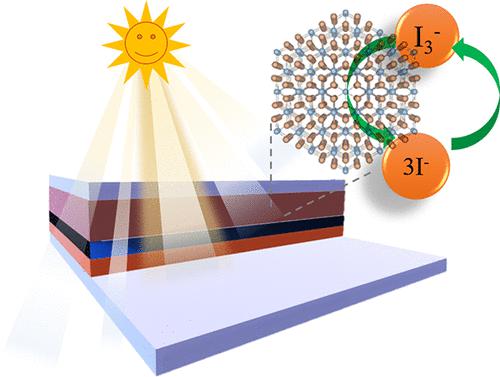当前位置:
X-MOL 学术
›
ACS Appl. Electron. Mater.
›
论文详情
Our official English website, www.x-mol.net, welcomes your
feedback! (Note: you will need to create a separate account there.)
Nickel Telluride Quantum Dots as a Counter Electrode for an Efficient Dye-Sensitized Solar Cell
ACS Applied Electronic Materials ( IF 4.3 ) Pub Date : 2023-12-29 , DOI: 10.1021/acsaelm.3c01472 Santhosh Narendhiran 1 , Soumen Midya 2 , Preeti Lata Mahapatra 3 , Manoj Balachandran 1 , Chandra S Tiwary 4 , Abhishek Kumar Singh 2 , Partha Kumbhakar 1
ACS Applied Electronic Materials ( IF 4.3 ) Pub Date : 2023-12-29 , DOI: 10.1021/acsaelm.3c01472 Santhosh Narendhiran 1 , Soumen Midya 2 , Preeti Lata Mahapatra 3 , Manoj Balachandran 1 , Chandra S Tiwary 4 , Abhishek Kumar Singh 2 , Partha Kumbhakar 1
Affiliation

|
Transition-metal dichalcogenides (TMDs) have recently emerged as highly appealing and efficient options for electrodes in dye-sensitized solar cells (DSSCs), effectively substituting the scarce and expensive metal platinum (Pt). In this work, nickel telluride (NiTe2) quantum dots (QDs) were effectively used as a counter electrode for DSSCs by providing a sustainable alternative to the scarce platinum (Pt). The DSSC based on NiTe2 QDs shows a power conversion efficiency (η) of ∼8.06%, which is comparatively better than exfoliated NiTe2 (η ≈ 6.58%). The density functional theory (DFT) was employed to comprehensively understand the underlying mechanisms involved in the charge transfer between the QDs and the electrolyte species. The outcomes demonstrated the benefits of creating diverse structural configurations designed to enhance interfacial transport, ensure an even distribution of active facets, and improve the electrocatalytic performance in the DSSC process.
中文翻译:

碲化镍量子点作为高效染料敏化太阳能电池的对电极
过渡金属二硫属化物 (TMD) 最近已成为染料敏化太阳能电池 (DSSC) 电极的极具吸引力且高效的选择,有效替代了稀缺且昂贵的金属铂 (Pt)。在这项工作中,碲化镍 (NiTe 2 ) 量子点 (QD) 为稀缺铂 (Pt) 提供了可持续的替代品,被有效地用作 DSSC 的对电极。基于NiTe 2 QDs的DSSC显示出~8.06%的功率转换效率(η),这比剥离的NiTe 2 (η ≈ 6.58%)要好。采用密度泛函理论(DFT)来全面理解量子点和电解质物质之间电荷转移所涉及的潜在机制。结果证明了创建旨在增强界面传输、确保活性面均匀分布并提高 DSSC 过程中电催化性能的不同结构配置的好处。
更新日期:2023-12-29
中文翻译:

碲化镍量子点作为高效染料敏化太阳能电池的对电极
过渡金属二硫属化物 (TMD) 最近已成为染料敏化太阳能电池 (DSSC) 电极的极具吸引力且高效的选择,有效替代了稀缺且昂贵的金属铂 (Pt)。在这项工作中,碲化镍 (NiTe 2 ) 量子点 (QD) 为稀缺铂 (Pt) 提供了可持续的替代品,被有效地用作 DSSC 的对电极。基于NiTe 2 QDs的DSSC显示出~8.06%的功率转换效率(η),这比剥离的NiTe 2 (η ≈ 6.58%)要好。采用密度泛函理论(DFT)来全面理解量子点和电解质物质之间电荷转移所涉及的潜在机制。结果证明了创建旨在增强界面传输、确保活性面均匀分布并提高 DSSC 过程中电催化性能的不同结构配置的好处。


















































 京公网安备 11010802027423号
京公网安备 11010802027423号